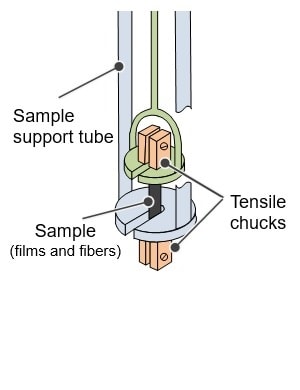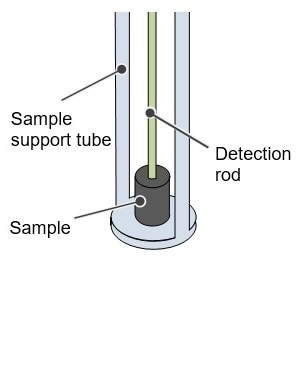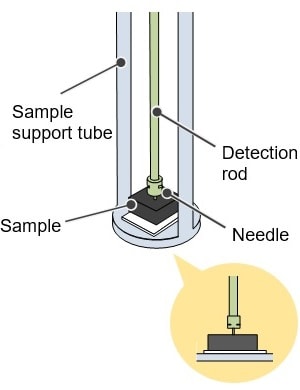What is a TMA?
Thermomechanical Analyzer
These instruments measure changes in the dimensions of a sample while changing the sample temperature in accordance with a program, and applying a fixed pressure to the sample during this process.
Glass transition temperature, thermal expansion, thermal contraction, softening temperature
Measurement Modes
|
Tension measurement
|
Expansion measurement
|
Penetration measurement
|
|---|---|---|
|
|
|
|
|
In this method, a load is applied in the tensile direction to the film or fiber sample fixed at top and bottom by the chucks. The sample displacement, such as contraction or elongation, is then measured.
|
In this method, a load is applied to the sample to the extent that no deformation occurs, and the displacement resulting from thermal expansion of the sample is measured.
|
In this method, a probe with a needle-shaped tip is used to measure the displacement resulting from softening of the sample when a compressive load is applied.
|
Example of TMA Data
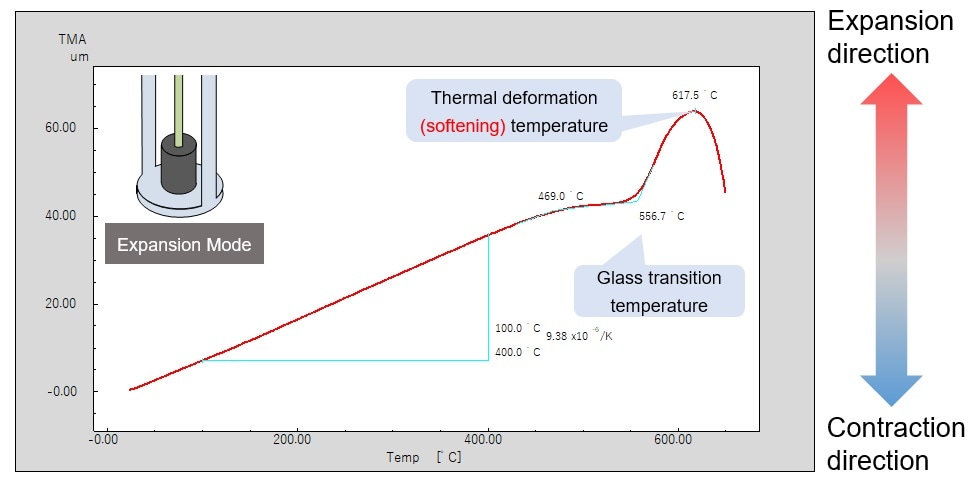
With a TMA, the thermal expansion coefficient and the glass transition temperature of a sample can be measured. The TMA curve when glass is heated is shown above. It can be seen that the expansion coefficient changes abruptly near 560 °C. This indicates that the glass transition has occurred. After this, the TMA curve changes abruptly near 620 °C. This is because the sample softens.
Tensile Measurements of a PET Film
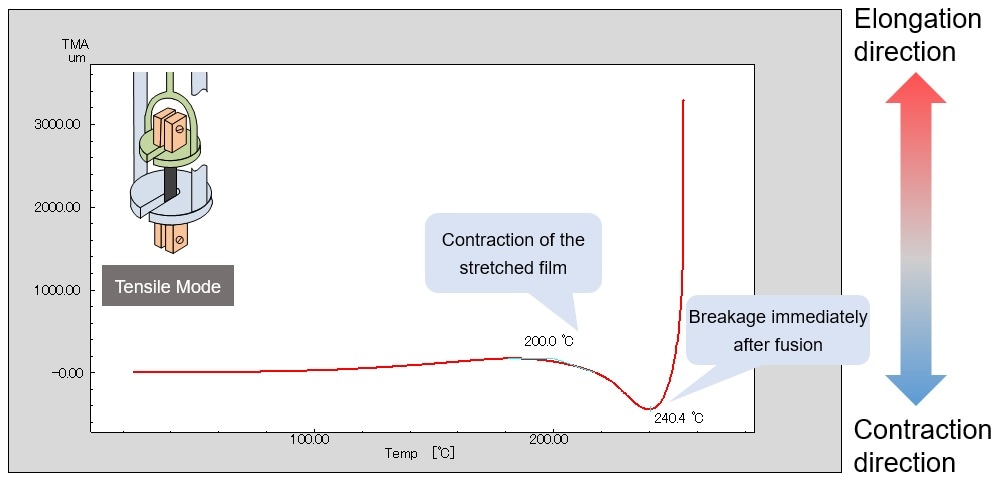
The PET film is heated while elongating the sample with a 5 g load. Contraction of the sample is seen near 200 °C. This is because the PET film, which was stretched when molded, returns to its original state because of the heat. The switch from contraction to elongation occurs at 240 °C. This is attributed to melting. The sample breaks after abrupt elongation immediately afterward.



